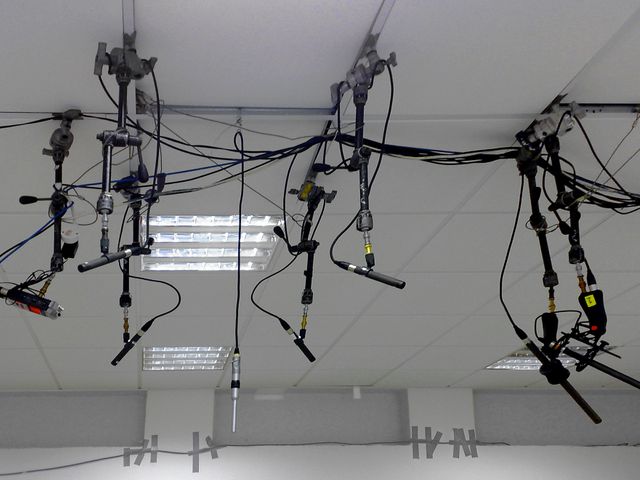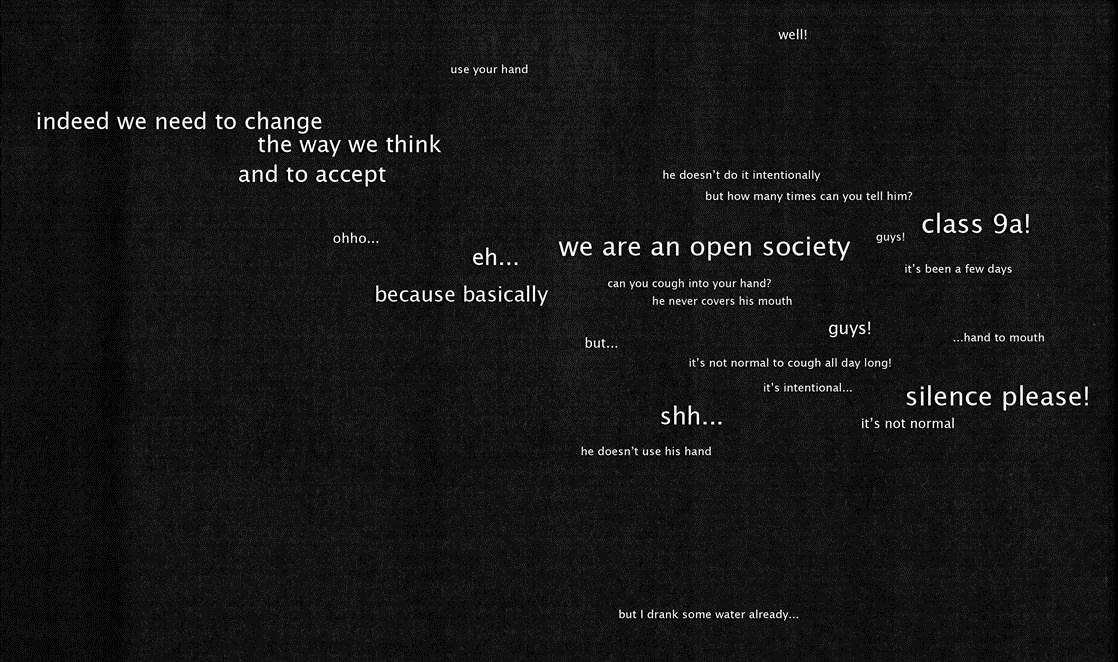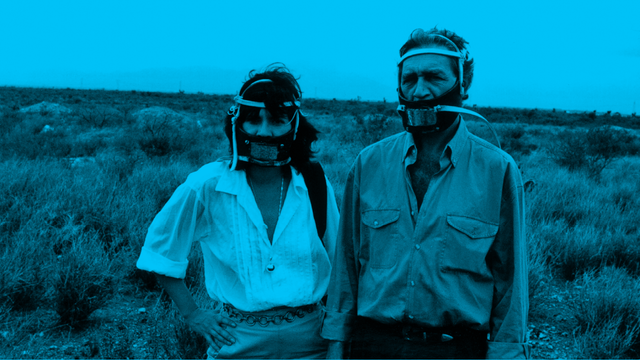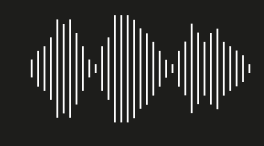May 29–Jul 14, 2014
School
Audiovisual installation by Smadar Dreyfus in the framework of Berlin Documentary Forum 3
Installation
May 29–Jul 14, 2014
School is a large-scale audiovisual installation immersing the visitor in the life of Tel Aviv secondary schools.
Each of its rooms contains a spatial audio recording of a different subject lesson – Arabic, Bible Studies, Biology, Citizenship, Geography, History, and Literature – connected by a central corridor. The recorded Hebrew voices are visualized as projected English text synchronized with the rhythms of speech. Dreyfus produced the recordings over a period of two years, visiting a number of secular state schools that offered the same kind of education she had growing up in Israel. She captured the interactions of pupils and teachers in 68 randomly selected lessons, then crafted seven for the final presentation.
The voices in School are what experimental composer and theorist Michel Chion would call acousmêtres: voices that are heard without the speakers’ bodies being seen. This endows them with the paradoxical status of being both proximate to and distant from the viewer: proximate, since the voice sounds as if the person were inside the room, and distant, because the visitor cannot connect the voice to a face. This play of acousmatic voices marks School as an extension of the artist’s earlier works, Lifeguards (2002–05) and Mother’s Day (2006–08), which employ the same technique of translating voices recorded in public settings into projections of text. But whereas these works alternate between the spatial sound recordings and silent footage shot at the same location, disarticulating the bond that normally joins image and sound, Dreyfus goes further in School, suppressing the image entirely. It is precisely this denial of the image that allows the viewer-listener to inhabit another place and time.
In the darkness of the installation, the visitor encounters small, quotidian moments that broach broader questions of nationhood and belonging. Dreyfus communicates a sense of the school as a social space of intersubjective, dialogic encounters in which distinct pedagogical techniques confront pupils who are anything but passive. And yet, throughout the lessons the school also emerges as a key site of disciplinary power in which individual subjects are interpellated as citizens. In his 1970 essay, “Ideology and Ideological State Apparatuses, Louis Althusser identifies the educational institution as a primary site for the reproduction of ideology, writing that, “The school teaches ‘know-how’, but in forms which ensure subjection to the ruling ideology or the mastery of its ‘practice’.” Dreyfus’ installation chimes with Althusser’s hypothesis while also suggesting the extent to which subjection to the ruling ideology is never total, but rather always contested and fragmentary. In School, we encounter young adulthood as an inchoate moment of openness.
Smadar Dreyfus (b. 1963) is an Israeli artist living in London.
Curator: Hila Peleg
School (2009-11) was commissioned by the Folkestone Triennial with the generous support of Outset Contemporary Art Fund and Arts Council England.
The Berlin presentation of School (2009-11) is funded by Hauptstadtkulturfonds.



